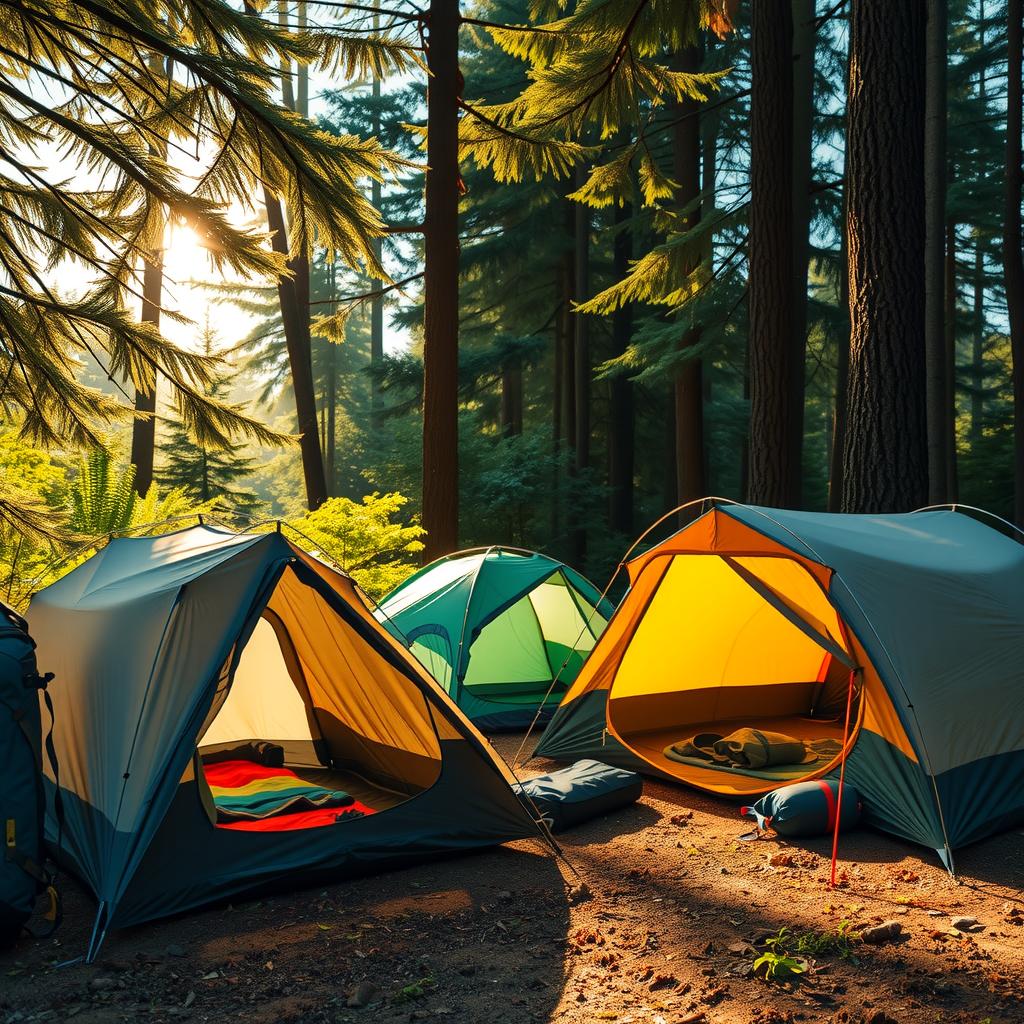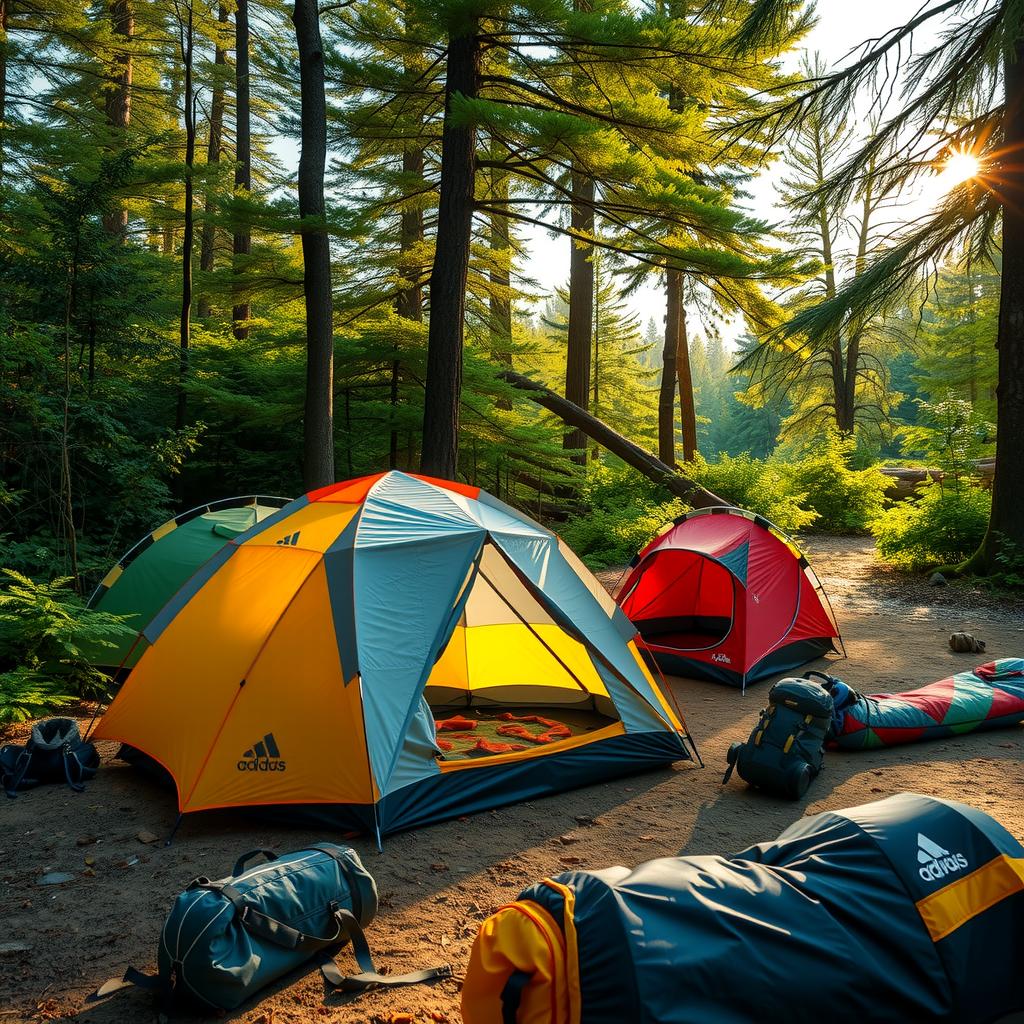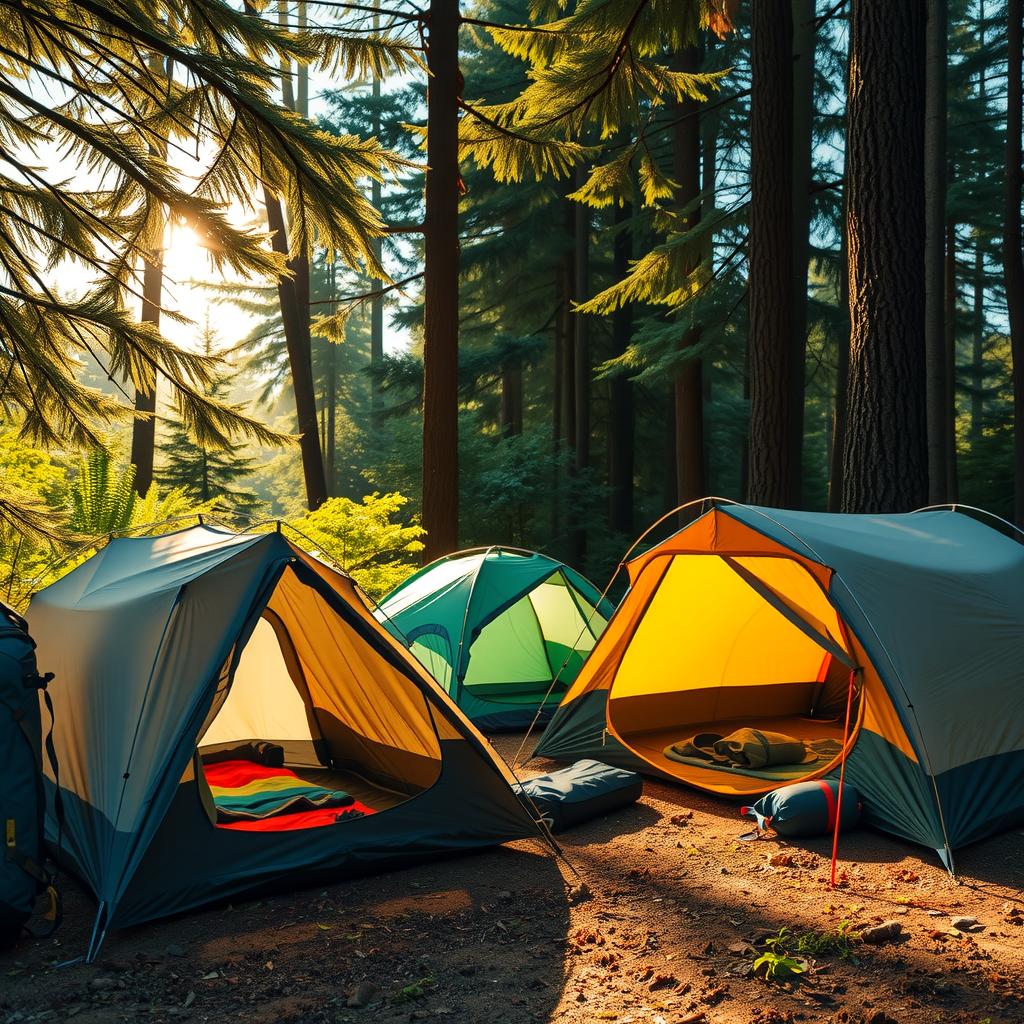When it comes to outdoor adventures, the choice of camping gear can make or break your experience. Among the myriad of options available, ultralight tents have gained immense popularity among backpackers and campers alike, thanks to their perfect blend of portability and protection. However, as the market becomes increasingly saturated with various models boasting different features and price points, how does one make an informed decision? This article delves into a comprehensive comparison of ultralight tents, illuminating the key aspects that set them apart from one another while providing essential insights into their performance.
The core value of this piece lies in its thorough examination of what makes a great lightweight shelter for your next excursion. Readers will discover not only product specifics but also comparisons that highlight strengths and weaknesses across a range of popular backpacking tents. By focusing on critical elements such as weight, durability, weather resistance, and ease of setup—factors that are crucial when selecting camping equipment—this review aims to simplify the often overwhelming task of choosing between various options.
As we explore these innovative designs in detail through our outdoor gear review format, readers can expect practical solutions tailored to their unique camping needs. Whether it’s a solo trek through dense forests or a family gathering at a campsite under starlit skies, knowing which ultralight tent suits specific circumstances is invaluable for ensuring comfort throughout any adventure.
So prepare to embark on this journey through the world of tent reviews, where each model’s capabilities are dissected with precision. The following sections promise engaging commentary backed by data-driven analysis aimed at equipping outdoor enthusiasts with all they need for an unforgettable experience under canvas. With every carefully curated comparison between leading models like Big Agnes Copper Spur and REI Co-op Quarter Dome, readers will find themselves better prepared than ever before to choose their ideal camping essentials!

Key Points:
-
Weight and Portability: Understanding the advantages of ultralight tents
When considering camping gear, weight is a critical factor for backpackers. Ultralight tents offer significant benefits by minimizing the overall load during outdoor adventures. This aspect allows campers to hike longer distances with ease, making them ideal for those who prioritize portability without compromising on comfort. -
Durability and Weather Resistance: Evaluating essential features of ultralight shelters
In the realm of tent comparisons, durability cannot be overlooked. Many modern ultralight tents are constructed from advanced materials that provide excellent weather resistance, ensuring shelter against rain and wind while remaining lightweight. Campers should assess how different models perform in various conditions, as this will ultimately affect their outdoor experience. -
User Experience and Setup Ease: Importance of practical insights in tent reviews
For potential buyers navigating through numerous options in camping equipment, user experiences play a vital role in decision-making. The ease of setup is another crucial aspect when evaluating backpacking tents. A well-reviewed model that can be pitched quickly enhances convenience during trips. By delving into comprehensive outdoor gear reviews, readers can gain valuable insights into which ultralight tents best suit their specific needs and preferences before making a purchase.

The Essence of Ultralight Tents in Backpacking
Why Ultralight Tents Are Revolutionizing Outdoor Adventures
Ultralight tents have emerged as a crucial element in the backpacker’s arsenal, transforming the way enthusiasts engage with nature. These lightweight shelters offer an unparalleled combination of portability and efficiency, making them ideal for those who venture into the wild for extended periods. Weighing often less than two pounds, ultralight tents significantly reduce pack weight, allowing hikers to carry their camping essentials without compromising on comfort or safety. As outdoor gear reviews frequently highlight, weight efficiency is paramount; every ounce saved translates to more energy conserved during long treks. Moreover, these innovative designs are tailored not only for minimalism but also for durability—crafted from advanced materials that can withstand harsh weather conditions while remaining impressively light.
The appeal of ultralight tents extends beyond mere weight considerations; they encapsulate a philosophy centered around freedom and exploration. In comparison to traditional camping equipment, which can be cumbersome and heavy, ultralight shelters promote spontaneity—the ability to set up camp almost anywhere without being bogged down by excess gear. This adaptability opens doors to remote locations previously deemed inaccessible due to logistical challenges posed by heavier equipment. Also noteworthy is how these tents often incorporate cutting-edge features such as easy-pitch systems and excellent ventilation solutions that enhance user experience under various environmental conditions—a factor highlighted consistently in tent reviews across multiple platforms.
Innovations Shaping Modern Ultralight Tents
Key Features That Stand Out
The design innovations inherent in ultralight tents cater specifically to modern backpackers’ needs while adhering to rigorous standards of functionality and reliability. One feature commonly discussed among outdoor gear reviews is their streamlined construction—many models eliminate unnecessary components like extra guy lines or poles without sacrificing stability or performance against wind and rain elements. For instance, several brands have adopted trekking pole support systems that allow users to utilize their hiking poles as part of the tent structure itself—effectively reducing overall carried weight further.
Moreover, advanced fabric technology plays a significant role in enhancing both waterproof capabilities and breathability within backpacking tents. Fabrics treated with silicone coatings provide remarkable water resistance while maintaining low bulkiness—a critical consideration when packing essential camping gear into limited space constraints within backpacks. Furthermore, many contemporary designs include vestibules offering additional storage space outside sleeping areas; this practical adaptation fosters organization even when living minimally outdoors.
As one delves deeper into tent comparisons across various brands catering specifically towards ultralights versus standard options available on the market today—it becomes apparent that thoughtful engineering combined with user feedback has culminated in products designed explicitly for seamless integration into outdoor adventures at unprecedented levels of convenience whilst minimizing hindrances associated historically prevalent bulky setups used priorly throughout decades past! Thus it’s clear why enthusiastic adventurers continue gravitating toward embracing ultralight offerings—they embody not just physical attributes but resonate profoundly with desires forged through experiences birthed out amidst untamed wilderness escapades!
Comparative Analysis of Top Ultralight Tent Models
Evaluating Durability and Weather Resistance in Lightweight Shelters
When it comes to ultralight tents, the balance between durability and weather resistance is crucial for outdoor enthusiasts. As camping gear evolves, so do the expectations surrounding ultralight tents. This comparative analysis delves into several popular models, exploring their strengths and weaknesses based on user experiences and expert reviews. For instance, the Big Agnes Copper Spur HV UL2 stands out with its remarkable combination of lightweight construction and robust materials that ensure longevity even under challenging conditions. Users frequently praise this model for its easy setup process, making it an ideal choice for backpackers seeking efficiency without sacrificing performance.
In contrast, another contender like the MSR Hubba NX 2 appeals to those who prioritize weather resistance over sheer weight. With a higher waterproof rating than many competitors in its class, this tent provides peace of mind during unexpected downpours—an essential feature for any serious camper or hiker navigating unpredictable climates. Reviews consistently highlight how well it performs against harsh winds while maintaining a breathable interior, which adds to overall comfort during extended stays outdoors.
Furthermore, when comparing these models side by side in terms of ease of setup—a vital factor for users after long hiking days—the simplicity found in products like the Nemo Hornet 2P cannot be overlooked. Known for its intuitive design that allows swift assembly within minutes, this tent remains a favorite among solo backpackers aiming to minimize downtime at camp sites while maximizing exploration time each day.
However, it’s important to note that not all ultralight options are created equal; some may sacrifice structural integrity for lower weight profiles. The Sea to Summit Telos TR3, despite being slightly heavier than some ultralights—thanks largely due to additional features such as enhanced ventilation systems—offers impressive stability against severe weather conditions while still adhering closely to minimalist principles favored by most backpacking enthusiasts.
A comprehensive evaluation reveals significant differences across various models regarding material quality too—particularly when examining fabric strength versus tear resistance ratings outlined in detailed product specifications found within outdoor gear reviews. These metrics prove essential when considering long-term use and reliability during adventurous excursions where equipment failure is simply not an option.
Ultimately, consumers must weigh these factors carefully: Does one value quick setups over rugged durability? Or is maximum protection from elements more critical than carrying an extra ounce? With numerous choices available today—from sleek designs perfect for summer hikes like the Sierra Designs High Route 1 FL, which combines both style and functionality—to reliable four-season shelters such as the sturdy yet lightweight offerings from brands like Black Diamond—the decision boils down not just personal preference but also specific usage scenarios anticipated on upcoming trips into nature’s embrace.
This analysis thus serves as a resourceful guide through today’s market landscape filled with diverse options tailored towards every type of adventurer looking forward into their next great outdoor experience equipped properly with suitable camping essentials encapsulated cleverly within premium ultralight tents designed specifically engineered withstand whatever Mother Nature throws their way!
Choosing the Right Tent for Your Adventure
Essential Tips for Selecting the Perfect Ultralight Tent
When embarking on a camping trip, choosing the right tent can significantly enhance one’s outdoor experience. For avid campers and backpackers, ultralight tents are often a preferred choice due to their portability and convenience. However, selecting the ideal lightweight shelter requires careful consideration of various factors tailored to individual preferences and specific camping needs. To make an informed decision, potential buyers should contemplate several essential criteria that affect both performance and comfort during their adventures.
First and foremost, weight is a critical factor when evaluating ultralight tents. Many outdoor gear reviews emphasize that even a few ounces can make a substantial difference during long hikes or extended trekking journeys. Campers should look for options weighing less than three pounds while still offering adequate space and durability. Additionally, materials play an integral role in tent construction; high-quality fabrics such as ripstop nylon or silicone-coated polyester provide optimal waterproofing without adding excessive weight.
Another significant aspect to consider is weather resistance. Different camping conditions may require varying levels of protection from rain or snow; therefore, it’s vital to assess features like waterproof ratings (often measured in millimeters) as well as how well the tent withstands wind gusts or extreme temperatures. Buyers should focus on brands renowned for producing reliable backpacking tents, which can handle diverse environments effectively while maintaining low pack weights.
In addition to weather resistance, ventilation must not be overlooked when selecting ultralight tents. Proper airflow helps prevent condensation buildup inside the shelter—a common issue in humid climates—thus ensuring a comfortable sleeping environment at night. Look for designs equipped with mesh panels that encourage air circulation while keeping insects at bay.
Furthermore, ease of setup is another essential consideration highlighted in numerous tent reviews available online today. A complicated assembly process might lead to frustration after a long day of hiking; hence prospective buyers should prioritize models featuring simple pole systems or color-coded components designed for quick pitch times.
Lastly, personal preference plays an undeniable role in making this decision—some campers may prefer freestanding structures that allow flexibility regarding where they pitch their camping equipment, whereas others might find stakes necessary for stability against harsh winds more suitable based on past experiences outdoors.
Ultimately, finding your ideal ultralight tent involves balancing these considerations: weight vs durability versus ease-of-use among other important aspects unique to each adventurer’s style! By taking time researching different options through comparative analysis such as reading comprehensive outdoor gear reviews along with testing out various models firsthand whenever possible will ensure you choose wisely before heading into nature’s embrace fully prepared!
Frequently Asked Questions:
Q: What are ultralight tents, and why should I consider one for my camping trip?
A: Ultralight tents are designed specifically for backpackers and campers who prioritize minimizing weight without sacrificing comfort. These lightweight shelters often use advanced materials that provide durability while ensuring easy portability. Choosing an ultralight tent can significantly enhance your outdoor experience, allowing you to carry less gear and enjoy more freedom on the trail.
Q: How do I choose the right ultralight tent for my needs?
A: When selecting the ideal ultralight tent, consider several key factors such as durability, weather resistance, ease of setup, and space requirements. It’s essential to look at various tent comparisons to understand how different models perform under diverse conditions. Additionally, think about your typical camping environment—whether it’s wet or dry—and select a model that best suits those conditions while meeting your preferences in terms of design features.
Q: Are there any downsides to using an ultralight tent compared to traditional camping gear?
A: While ultralight tents offer numerous advantages like reduced weight and enhanced portability, they may not always provide the same level of robustness as heavier options. Some models might sacrifice extra features for weight savings or may have less interior space than their conventional counterparts. However, by thoroughly researching through detailed reviews of various camping equipment options, adventurers can find a balance between lightweight performance and necessary functionality tailored to their specific outdoor adventures.

